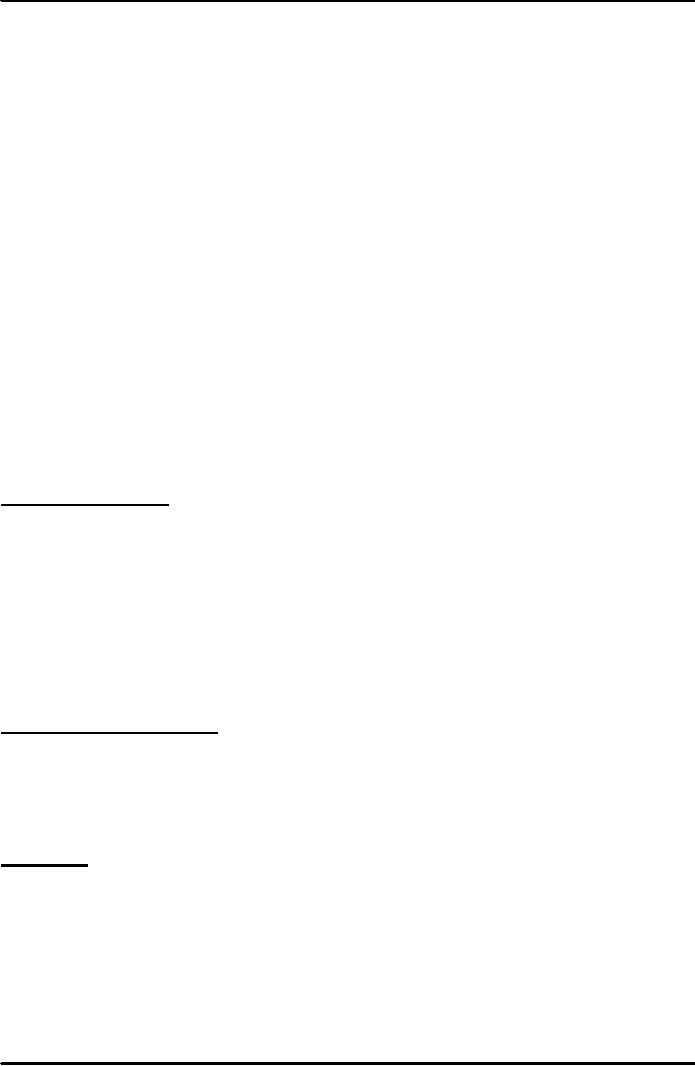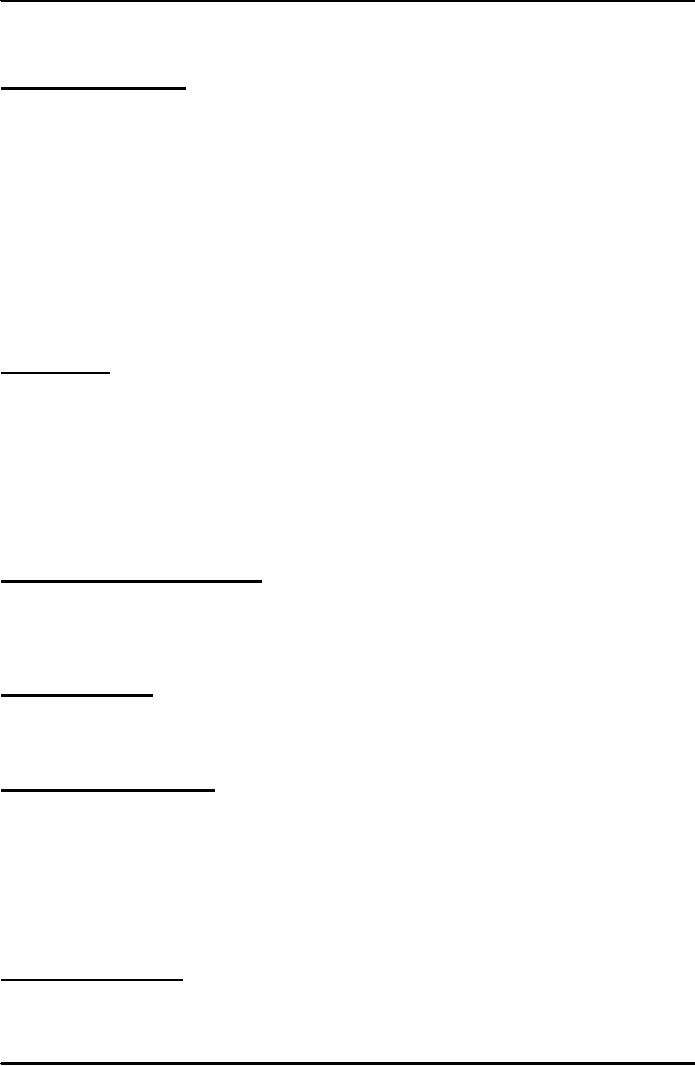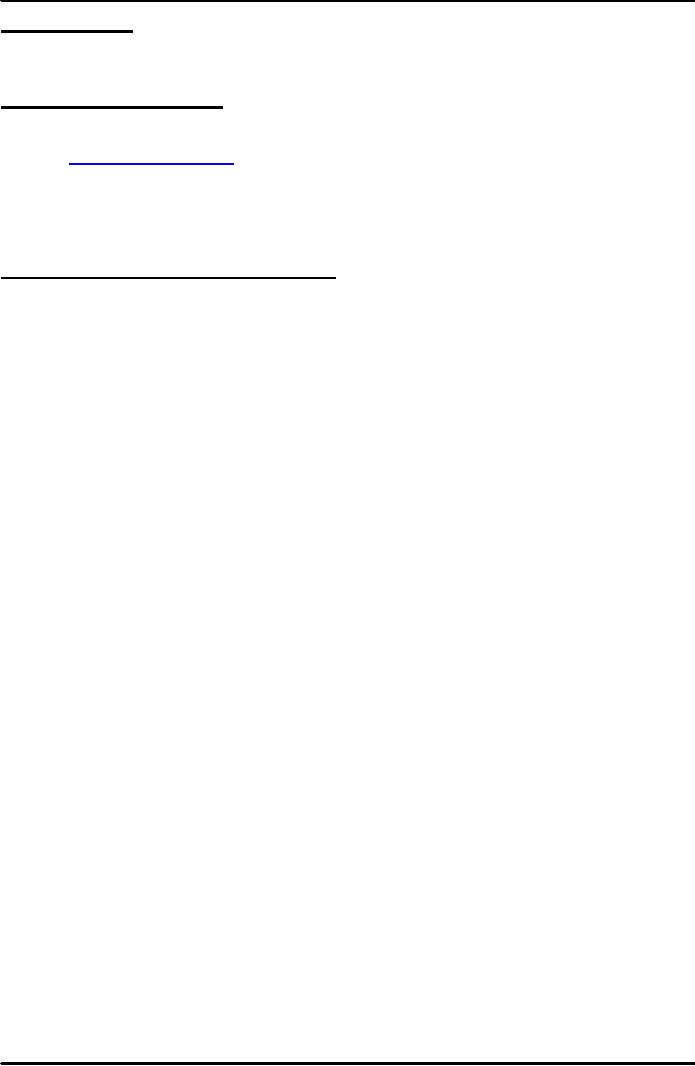 |
REFERENCING:Book by a single author, Edited book, Doctoral Dissertation |
| << REPORT WRITING:Conclusions and recommendations, Appended Parts |

Research
Methods STA630
VU
Lesson
45
REFERENCING
There
is a general mix up or referencing with
bibliography; though the purposes
are different. A
bibliography
is
the listing of the works that
are relevant to the topic of
research interest arranged in
alphabetical
order of the last names of authors. A
reference
list
is a subset of the bibliography,
which
includes
details of all the citations
used in literature survey and
elsewhere in the report, arranged
again,
in
the alphabetical order of the last names
of authors. These citations have the goals of
crediting the
author
and enabling the reader to find the
works cited.
Giving
references in the report or thesis is a
must, whereas the bibliography is
additional information
and
is certainly optional. There
should be no mixing up of the
meanings.
There
are different modes of
referencing being followed by
different disciplines. Find
out what mode is
followed
in your discipline. For
example, psychologists follow the
publication manual of American
Psychological
Association (APA), and sociologists
follow guidelines given in the manual of
American
Sociological
Association. Similarly other
subjects follow their
professional associations. Each of
these
manuals
specifies, with examples, how books,
journals, newspapers, dissertations, and
other materials
are
to be referenced in manuscripts. Whichever the style
you pick up, follow it
consistently. Since APA
format
is followed for referencing in
many journals in management
area, we shall present that
here as a
specimen.
All the citations mentioned in the
research report should find
a place in the References
section
at the end f the report.
Specimen
Format for citing different Types of
References
Book
by a single author
Leshin,
C. B. (1997). Management
on the World Wide Web. Englewood
Cliffs, NJ: Prentice-
Hall.
Start
with the last name, put a
comma and then initials with
full stop. It is followed by the year
of
publication
in parentheses with a full stop.
Then we have the title of the
publication; all in small
words
(unless
there is some name which has
to be with capital letter as it is in
this title) and in italics.
Give full
stop
at the end. It is followed by place of publication
with a colon at the end. After the
colon give the
name
of the publisher. Second line of the
reference should be indented by giving
five spaces.
Give
two spaces for separating the
references.
Book
by more than one
author
Cornett,
M., Wiley, B. J., &
Sankar, S. (1998). The
pleasures of nurturing. London:
McMunster
Publishing.
It
is the same as the previous one except
there is the use & separating the last author
from its preceding
one.
See it is not written `and'
but being used as symbol
`&.'
Edited
book
It
is a book of readings or called Reader,
which contains sections/articles written by a number
of
authors.
These articles may have been
published earlier in different
journals/books or these may
have
been
specially written for this
book. Such a book has an
editor or editors who
collected these
articles,
edited
them and published.
Pennathur,
A., Leong, F. T., &
Schuster, K. (Eds.) (1998). Style
and substance of thinking.
New
York: Wilson Press.
164

Research
Methods STA630
VU
Here
after the names of the
editors, the word editors is
abbreviated as "Eds." And
put in parentheses.
Other
instructions remain the
same.
Chapter
in an edited book
This
is an article written by single or
multiple authors and is printed in the
edited book.
Riley,
T., & Brecht, M. L. (1998).
The success in mentoring
process. In R. Williams
(Ed.)
Mentoring
and career success. pp.
129-150. New York: Wilson
Press.
We
start with the name(s) of the
author(s); same instructions.
Then the title of the article
published in
this
edited book. The title is in
small letters except the letter of the
first word. It is not to be
put in italics
or
in bold. Give full stop at
the end of the title. Then we tell
about the book and its
editor in which it
was
published.
Here the editor's name does
not start with the last
name, but is kept straight
as initials and
then
the last name. It is followed by the
title of the book which is in
italics. After the title we
specify the
pages
of the book on which this
article appeared. Rest is the
same i.e. place of publication and
the
publisher.
Journal
Article
Jean
quart, S., & Peluchette, J. (1997).
Diversity in the workforce and
management models. Journal
of
Social
Work Studies, 43
(3), 72-85.
The
title of the article is in
small letters. The name of the
journal is in italics. Such
professional
journals
are well known in the
academic community, therefore, the place
of publication and the
publisher
is not given. Instead, it
volume and number in the volume is given.
All the issues published
in
one year are one
volume. There could be number of
issues in a volume. Both the
volumes and issues
are
numbered. In this example 43 is the
volume and 3 given in the parentheses is
the number in this
volume.
It is followed by the pages on which
this article was
published.
Conference
Proceedings publications
Gardezi,
H. N. (2005). Population policy of
Pakistan. In Z. Sathar (Ed.), Proceedings of
the
Third
Conference on Research and Population,
(pp.
100-107). Islamabad:
Population
Council.
Doctoral
Dissertation
Chaudhary,
M.A. (2004). Medical
advances and quality of
life. Unpublished
doctoral
Dissertation,
Virtual University
Paper
presented at conference
Qureshi,
Q. A. (2005, May 16). Practical
tips for efficient
management.
Paper presented at
The
annual meeting Entrepreneurs,
Lahore.
It
is possible that the proceeding of a conference have
not been published. The
researcher got hold
of
paper
that was presented at the conference
and wanted to do it citation.
Here along with the year of
the
conference,
the date is also given.
Title of the paper is in italics.
Then give some information
about
owners
of the conference, followed by place where the conference
was held.
Unpublished
Manuscript
Kashoor,
M. A. (2005). Training
and development in the `90s. Unpublished
manuscript,
Virtual
University.
165

Research
Methods STA630
VU
Newspaper
Article
The
GM Pact. (2005, May 16).
The
Dawn, p.
4.
Referencing
Electronic Sources
Ahmad,
B. (2005). Technology and
immediacy of information. [On
line]
Available
http://www.bnet.act.com
Just
giving the site on the internet is not
sufficient. It is necessary that the
name of the author and
title
of
the writing should be given.
Internet site is actually in place of the
publisher and the place of
publication.
Referencing
and quotation in Literature
review
Cite
all references in the body of the
report using the author-year method of
citation; that is, the last
name
of the author(s) and the year of publication
are given at the appropriate
places. Examples of this
are
as follows:
a.
Rashid
(2005) has shown ...
b.
In
recent studies of dual
earner families (Khalid,
2004; Hameed, 2005) it has
been ....
c.
In
2004, Maryam compared dual
earner and dual career
families and found that
....
As
can be seen from the above,
if the name of the author appears as
part of the narrative as in the case
of
(a),
the year of publication alone
has to be cited in parentheses.
Note that in case (b),
both the author
and
the year are cited in
parentheses, separated by comma. If
the year and the author
are part of the
textual
discussion as in (c) above, the
use of parentheses is not
warranted.
Note
also the
following:
1.
Within
the same paragraph, you need
not include the year after
the first citation so long as
the
study
cannot be confused with other studies
cited in the article. An example of
this is: Gutek
(1985)
published her findings in the book
titled Sex
and the Workplace.
Gutek indicated ...
2.
When
the work is authored by two
individuals, always cite
both names every time the
reference
occurs
in the text.
3.
When
a work has more than two
authors but fewer than six
authors, cite all authors the first
time
the
reference occurs, and subsequently include
only the last name of the first
author followed by
"et
al." as per example
below:
Sekaran,
U., Martin, T., Trafton,
N., and Osborn R. N. (1980) found ...
(first citation)
Sekaran
et al. (1980) found ...
(subsequent citations)
4.
When
a work is authored by six or more
individuals cite only the last
name of the first
author
followed
by `et al.' and the year
for the first and subsequent
citations. Join the names in
a
multiple-author
citation in running text by the
word "and." In parenthetical
material, in tables,
and
in reference list, join the names by an
ampersand (&). Examples are given
below:
a.
As tucker and Snell (1989)
pointed out ...
b.
As has been pointed out
(Tucker & Snell, 1989)
...
5.
When
a work has no author, cite
in the text the first two or three words
of the article title.
Use
double
quotation marks around the
title of the article. For
example, while referring to
the
newspaper
article, the text might be
read as: While examining
unions ("with GM pact,"
1990).
6.
When
a work's author is designated as
"Anonymous," cite in the text, the
word Anonymous
followed
by a comma and the date: (Anonymous,
1979). In the reference list, an
anonymous
work
is alphabetized by the word Anonymous.
166

Research
Methods STA630
VU
7.
When
the same author has several
works published in the same
year, cite them in the same
order
as
they occur in the reference list,
with the in-press citations
coming last. For
example:
Research
on the mental health of dual-career
family members (Sekaran, 1985a, 1985b,
1985c,
1999,
in press) indicates ...
8.
When
more than one author has to be
cited in the text, these
should be in alphabetical order
of
the
first author's last name, and the
citations should be separated by
semicolons as per
illustration:
In the job design literature (Aldag &
Brief, 1976; Alderfer, 1972;
Beatty, 1982;
Jeanquart,
1998) ...
Personal
communication through
letters, memos, telephone conversations, and the
like, should be cited
in
the text only and not
included in the reference list since
these are not retrievable
data. In the text,
provide
the initials as well as the last name of
the communicator together with
date, as in the following
example:
R.
Qureshi (personal communication, November
15, 2006) feels ...
Quotations
in Text
Quotations
should be given exactly as
they appear in the source.
The original wording,
punctuation,
spellings,
and italics must be preserved even if
they are erroneous. The
citation of the source of
direct
quotation
should always include the
page number(s) as well as the
reference.
Use
double quotation marks for
quotations in the text. Use
single quotation marks to
identify the
material
that was enclosed in double
quotation marks in the original
source. If you want to
emphasize
certain
words in the quotation, underline them and
immediately after the underlined words,
insert within
brackets
the words: italics
added. Use
three ellipsis points (...) to indicate
that you have omitted
material
from the original
source.
If
the quotation is more than 40 words, set
in a free-standing style starting on a
new line and
indenting
the
left margin a further five
spaces. Type the entire
quotation double spaced on the
new margin,
indenting
the first line of paragraphs
from the new margin.
If
you intend publishing an
article in which you have
quoted extensively from a
copyright work, it is
important
that you seek written
permission from the owner of the
copyright. Make sure that
you also
footnote
the permission obtained with respect to
the quoted material. Failure
to do so may result in
unpleasant
consequences, including legal
action taken through
copyright protection laws.
♣♣♣♣♣♣♣♣♣♣♣♣♣♣♣♣♣THE
END♣♣♣♣♣♣♣♣♣♣♣♣♣♣♣♣♣♣♣
167
Table of Contents:
- INTRODUCTION, DEFINITION & VALUE OF RESEARCH
- SCIENTIFIC METHOD OF RESEARCH & ITS SPECIAL FEATURES
- CLASSIFICATION OF RESEARCH:Goals of Exploratory Research
- THEORY AND RESEARCH:Concepts, Propositions, Role of Theory
- CONCEPTS:Concepts are an Abstraction of Reality, Sources of Concepts
- VARIABLES AND TYPES OF VARIABLES:Moderating Variables
- HYPOTHESIS TESTING & CHARACTERISTICS:Correlational hypotheses
- REVIEW OF LITERATURE:Where to find the Research Literature
- CONDUCTING A SYSTEMATIC LITERATURE REVIEW:Write the Review
- THEORETICAL FRAMEWORK:Make an inventory of variables
- PROBLEM DEFINITION AND RESEARCH PROPOSAL:Problem Definition
- THE RESEARCH PROCESS:Broad Problem Area, Theoretical Framework
- ETHICAL ISSUES IN RESEARCH:Ethical Treatment of Participants
- ETHICAL ISSUES IN RESEARCH (Cont):Debriefing, Rights to Privacy
- MEASUREMENT OF CONCEPTS:Conceptualization
- MEASUREMENT OF CONCEPTS (CONTINUED):Operationalization
- MEASUREMENT OF CONCEPTS (CONTINUED):Scales and Indexes
- CRITERIA FOR GOOD MEASUREMENT:Convergent Validity
- RESEARCH DESIGN:Purpose of the Study, Steps in Conducting a Survey
- SURVEY RESEARCH:CHOOSING A COMMUNICATION MEDIA
- INTERCEPT INTERVIEWS IN MALLS AND OTHER HIGH-TRAFFIC AREAS
- SELF ADMINISTERED QUESTIONNAIRES (CONTINUED):Interesting Questions
- TOOLS FOR DATA COLLECTION:Guidelines for Questionnaire Design
- PILOT TESTING OF THE QUESTIONNAIRE:Discovering errors in the instrument
- INTERVIEWING:The Role of the Interviewer, Terminating the Interview
- SAMPLE AND SAMPLING TERMINOLOGY:Saves Cost, Labor, and Time
- PROBABILITY AND NON-PROBABILITY SAMPLING:Convenience Sampling
- TYPES OF PROBABILITY SAMPLING:Systematic Random Sample
- DATA ANALYSIS:Information, Editing, Editing for Consistency
- DATA TRANSFROMATION:Indexes and Scales, Scoring and Score Index
- DATA PRESENTATION:Bivariate Tables, Constructing Percentage Tables
- THE PARTS OF THE TABLE:Reading a percentage Table
- EXPERIMENTAL RESEARCH:The Language of Experiments
- EXPERIMENTAL RESEARCH (Cont.):True Experimental Designs
- EXPERIMENTAL RESEARCH (Cont.):Validity in Experiments
- NON-REACTIVE RESEARCH:Recording and Documentation
- USE OF SECONDARY DATA:Advantages, Disadvantages, Secondary Survey Data
- OBSERVATION STUDIES/FIELD RESEARCH:Logic of Field Research
- OBSERVATION STUDIES (Contd.):Ethical Dilemmas of Field research
- HISTORICAL COMPARATIVE RESEARCH:Similarities to Field Research
- HISTORICAL-COMPARATIVE RESEARCH (Contd.):Locating Evidence
- FOCUS GROUP DISCUSSION:The Purpose of FGD, Formal Focus Groups
- FOCUS GROUP DISCUSSION (Contd.):Uses of Focus Group Discussions
- REPORT WRITING:Conclusions and recommendations, Appended Parts
- REFERENCING:Book by a single author, Edited book, Doctoral Dissertation